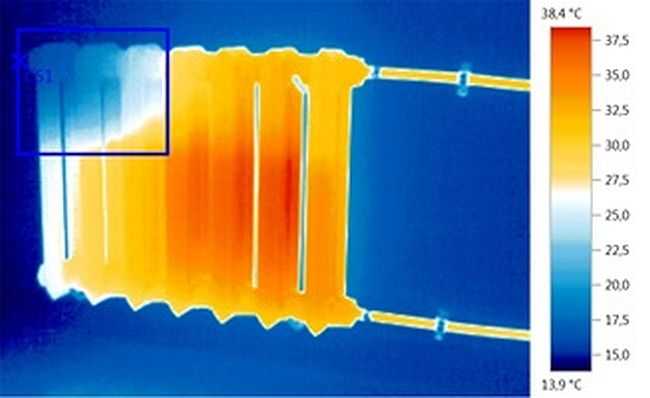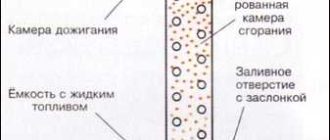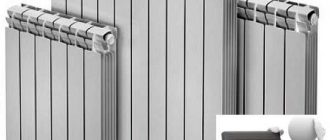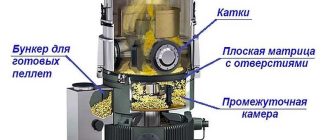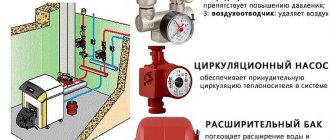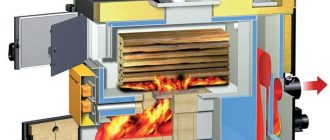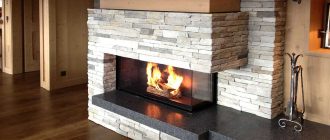Properly working heating in winter is a vital necessity. You cannot survive without heating in our climate. But periodically, the previously normally working system starts to malfunction – radiators do not warm up or warm up badly, extraneous noise (gurgling) appears. All these are signs that there is air in the heating system. The situation is far from rare, but it brings discomfort.
기사 내용
What threatens air in the heating system
Everyone, probably, more than once met with the fact that the heating is turned on, but some radiator or a whole group of radiators are heated poorly or stand cold at all. The reason for this is air in the heating system. It usually accumulates at the highest point, displacing the coolant from this place. If it accumulates enough, the circulation of the coolant may stop altogether. Then it is said that there is an air lock in the heating system. Professionals in this case say that the system is inflated.
To resume normal operation of the heating system it is necessary to remove the accumulated air. To do this, there are two options. The first is more often used in centralized heating systems. On the outermost radiators in the branch, cocks are installed. They are called drains. This is an ordinary valve cock. After filling the system with coolant, it is opened, kept open until a steady stream of water without air bubbles (then the water pours jerkily). If we talk about multi-storey houses, then during the start of the system, the air vents on the risers should be opened first, and the rest can already be led out to the apartments.
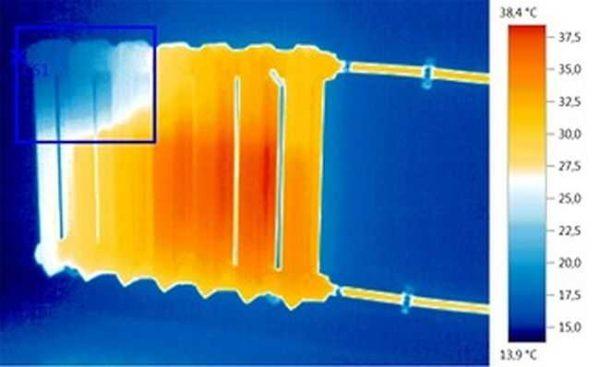
In private systems or after the replacement of radiators in apartments, to vent the air put not the usual taps, but special air valves. They are manual and automatic. They are placed in the upper free collector for each radiator (preferably) and/or in the highest point of the system.
What else threatens air in the heating system? It contributes to a faster destruction of the components of the heating system. Although today polymers are increasingly used, there are still plenty of metal parts. The presence of oxygen contributes to the activation of oxidation (ferrous metal rusts).
Causes of appearance
Air in the heating system can appear for various reasons. If it is a one-time problem – you can simply remove it and do not engage in searching for the source. If deflating is required several times a season, you will have to look for the cause. Here are the most common ones:
These are the most common places and ways that air gets into radiators and radiators. It is necessary to expel it from there from time to time, but when the heating starts up in the fall, it is a must.
Install air vent valves
To remove air from the heating on the radiators put air vents – manual and automatic air valves. They are called differently: diverter, air vent, diverter or air valve, air vent, etc. The essence of this does not change.
Air valve Maevsky
This is a small device for bleeding air out of radiators manually. It is installed in the upper free collector of the radiator. There are different diameters for different cross-section of the collector.
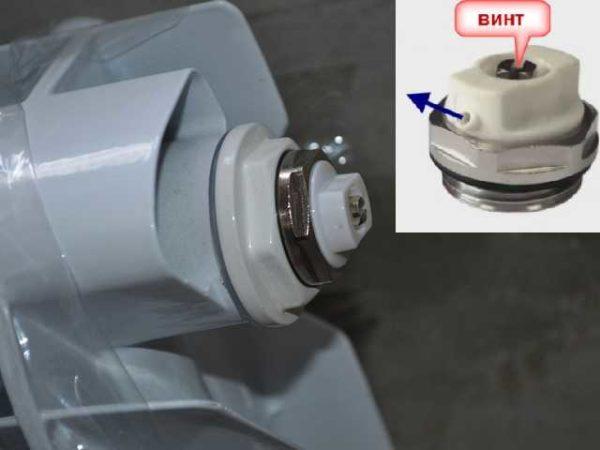
It is a metal disk with a through hole of conical shape. This hole is closed with a cone-shaped screw. By unscrewing the screw a few turns, you allow the air to escape from the radiator.
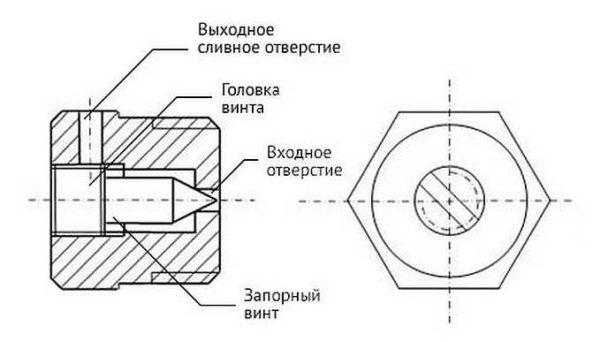
To facilitate the air outlet, an additional hole is made perpendicular to the main channel. Through this hole the air actually escapes. During deflating with the help of the Maevsky tap, direct this hole upwards. After that you can unscrew the screw. Unscrew it a few turns, do not unscrew it too much. After the hissing stops, return the screw to its original position and move on to the next radiator.
When starting up the system, it may be necessary to bypass all air collectors several times – until the air stops coming out at all. The radiators should then warm up evenly.
Automatic bleed valve
These small devices are placed both on the radiators and at other points in the system. They differ in that they allow you to bleed the air in the heating system in automatic mode. To understand the principle of operation, consider the structure of one of the automatic air valves.
The principle of operation of the automatic bleeder is as follows:
According to this principle, different designs of automatic air valves work. They can be straight, angular. Are put in the highest points of the system, are present in the safety group. Can be installed in identified problem areas – where the pipeline has an incorrect slope, which causes air to accumulate there.
Instead of manual Maevsky valves, you can put an automatic drain for radiators. In size it is only slightly larger, but it works in automatic mode.
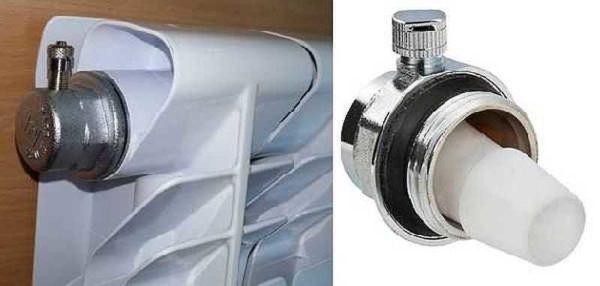
Cleaning from salts
The main trouble with automatic air bleed valves for heating systems is that the air outlet hole is often overgrown with salt crystals. In this case, either air does not escape or the valve begins to “weep”. In either case, the valve must be removed and cleaned.
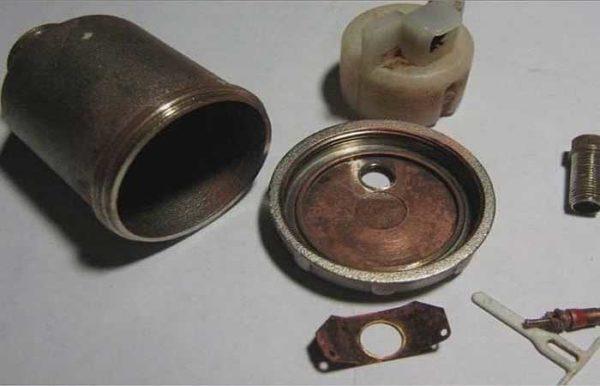
To do this without stopping the heating, put automatic air valves in a pair with check valves. The check valve is mounted first, and the air valve is mounted on it. If necessary, the automatic air collector for the heating system is simply unscrewed, disassembled (unscrew the lid), cleaned and reassembled. After that, the device is again ready to bleed air from the heating system.
How to get rid of an air lock
Unfortunately, the air lock is not always in an easily accessible place. If there are design or installation errors, air can accumulate in the pipes. It’s not easy to drain it from there. First, we locate the air lock. At the location of the plug, the pipes are cold and a gurgling sound can be heard. If there are no obvious signs, check the pipes by sound – tapping on the pipes. In the place of air accumulation the sound will be more ringing and louder.
The found air lock must be expelled. If we are talking about the heating system of a private house, to do this, raise the temperature and/or pressure. Let’s start with pressure. Open the nearest drain valve (in the course of the coolant flow) and make-up valve. Water starts flowing into the system, raising the pressure. This forces the plug forward. When air gets to the drain valve, it comes out. The make-up stops when all the air is out – the bleed valve stops hissing.
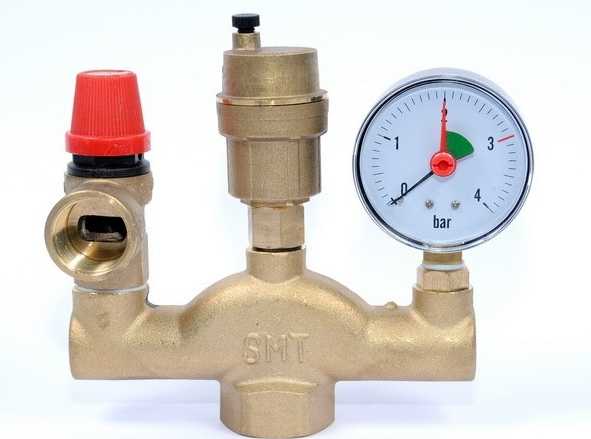
Not all air locks give up so easily. For the most stubborn ones, the temperature and pressure must be raised simultaneously. These parameters are brought to values close to the maximum. They must not be exceeded – it is too dangerous. If after that the plug has not gone away, you can try to open simultaneously the drain valve (for draining the system) and the make-up valve. It may be possible to move the air lock or get rid of it altogether.
If such a problem occurs constantly in one place – there is an error in the design or wiring. In order not to have to suffer every heating season, a valve is installed in the problematic place to remove the air. You can cut a tee into the main line and install an air vent at the free inlet. In this case, the problem will be solved simply.

